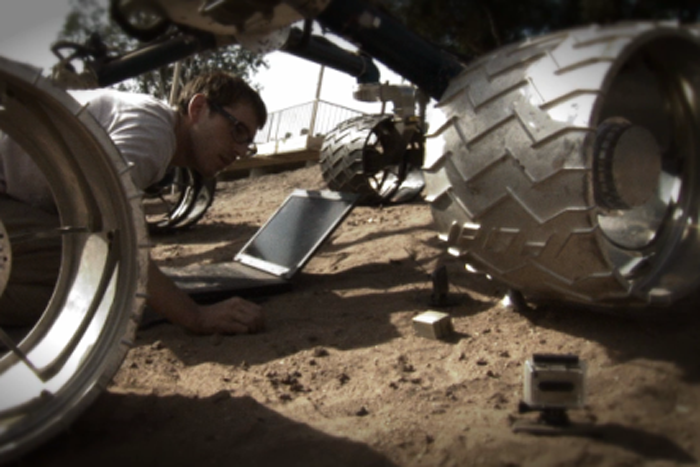Mars Rover Curiosity's Mileage Milestone Inspires 5K Run (Video)

NASA's Mars rover Curiosity achieved a big mileage milestone last week, motivating many of its handlers to get out and stretch their own legs.
"The rover just passed its 5K [kilometer] mark, and a lot of people here at JPL went on a 5K run to celebrate with the rover," rover driver Matt Heverly, of NASA's Jet Propulsion Laboratory in Pasadena, Calif., said in a new Curiosity video posted online Thursday (Feb. 14).
Curiosity's odometer rolled past 5 kilometers, which is about 3.1 miles, shortly after the six-wheeled robot crossed a 3-foot-tall (1 meter) sand dune and entered a region the mission team is calling "Moonlight Valley."
Moonlight Valley appears to offer a relatively smooth route to the base of the 3.4-mile-high (5.5 km) Mount Sharp, which has long been Curiosity's main science destination. The rover's handlers are keen to reduce the wear and tear on Curiosity's wheels, which has accelerated in the past few months.
"We think that's because we're in a different type of terrain, where the rocks are really especially sharp and well-cemented into the ground," Heverly said.
Engineers at JPL are trying to get a better handle on wheel wear using Scarecrow, a brainless version of Curiosity that weighs as much here on Earth as Curiosity does on Mars.
"We're using these wheels and this rover and these obstacles to understand really what's going on, and how these rocks can cause damage to the wheels," Heverly said. "We're also looking at different strategies to try to minimize this and avoid some of these rocks."
Breaking space news, the latest updates on rocket launches, skywatching events and more!
The 1-ton Curiosity rover touched down inside Mars' 96-mile-wide (155 km) Gale Crater in August 2012, tasked with determining if the Red Planet could ever have supported microbial life. It has already checked off that primary mission goal, finding that an area near its landing site called Yellowknife Bay was indeed habitable billions of years ago.
Curiosity departed Yellowknife Bay last July and should arrive at the base of Mount Sharp around the middle of this year. Mission scientists want the robot to climb up through the lower reaches of Mount Sharp, whose many layers record a history of the Red Planet's changing environmental conditions.
Follow Mike Wall on Twitter @michaeldwall and Google+. Follow us @Spacedotcom, Facebook or Google+. Originally published on Space.com.

Michael Wall is a Senior Space Writer with Space.com and joined the team in 2010. He primarily covers exoplanets, spaceflight and military space, but has been known to dabble in the space art beat. His book about the search for alien life, "Out There," was published on Nov. 13, 2018. Before becoming a science writer, Michael worked as a herpetologist and wildlife biologist. He has a Ph.D. in evolutionary biology from the University of Sydney, Australia, a bachelor's degree from the University of Arizona, and a graduate certificate in science writing from the University of California, Santa Cruz. To find out what his latest project is, you can follow Michael on Twitter.
